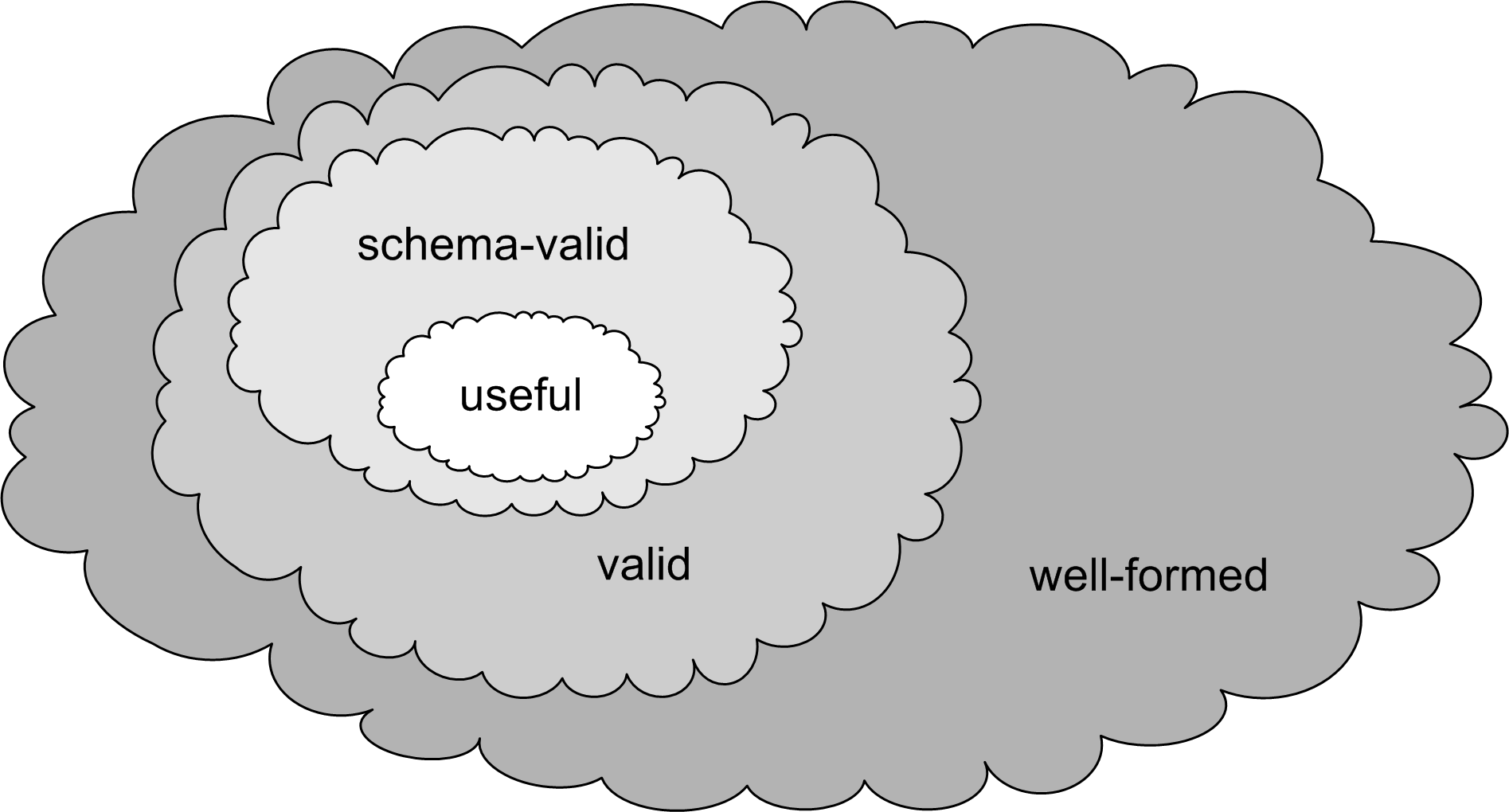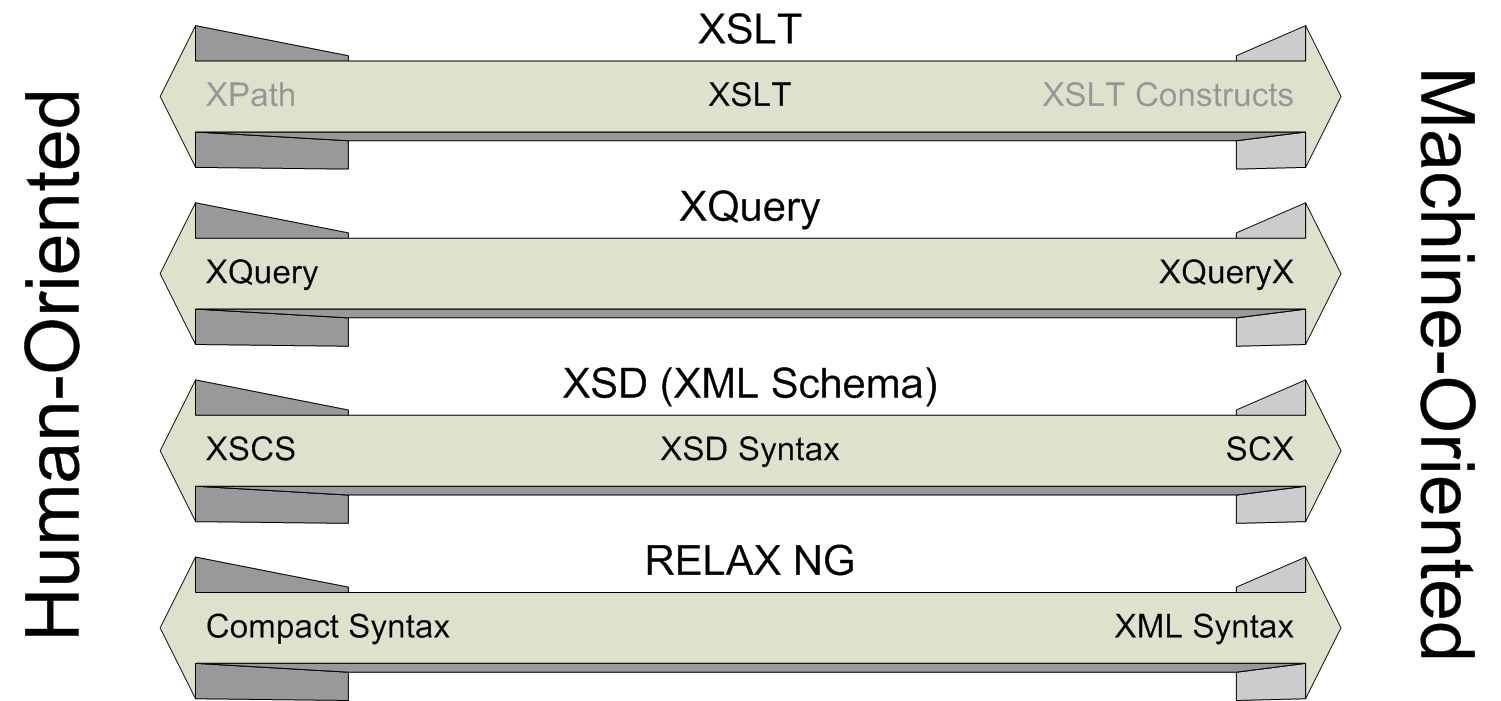(28) Compiling Assertions
<xsl:stylesheet version="1.0"
xmlns:xsl="http://www.w3.org/1999/XSL/Transform"
xmlns:axsl="http://www.w3.org/1999/XSL/TransformAlias"
xmlns:sch="http://www.ascc.net/xml/schematron"
>
<xsl:namespace-alias stylesheet-prefix="axsl" result-prefix="xsl"/>
<!-- ASSERT and REPORT -->
<xsl:template match="sch:assert | assert">
<xsl:if test="not(@test)">
<xsl:message>Markup Error: no test attribute in <assert></xsl:message>
</xsl:if>
<axsl:choose>
<axsl:when test="{@test}"/>
<axsl:otherwise>
<xsl:call-template name="process-assert">
<xsl:with-param name="role" select="@role"/>
<xsl:with-param name="id" select="@id"/>
<xsl:with-param name="test" select="normalize-space(@test)" />
<xsl:with-param name="icon" select="@icon"/>
<xsl:with-param name="subject" select="@subject"/>
<xsl:with-param name="diagnostics" select="@diagnostics"/>
</xsl:call-template>
</axsl:otherwise>
</axsl:choose>
</xsl:template>
<xsl:template match="sch:report | report">
<xsl:if test="not(@test)">
<xsl:message>Markup Error: no test attribute in <report></xsl:message>
</xsl:if>
<axsl:if test="{@test}">
<xsl:call-template name="process-report">
<xsl:with-param name="role" select="@role"/>
<xsl:with-param name="test" select="normalize-space(@test)" />
<xsl:with-param name="icon" select="@icon"/>
<xsl:with-param name="id" select="@id"/>
<xsl:with-param name="subject" select="@subject"/>
<xsl:with-param name="diagnostics" select="@diagnostics"/>
</xsl:call-template>
</axsl:if>
</xsl:template>![]() [http://creativecommons.org/licenses/by/3.0/]
[http://creativecommons.org/licenses/by/3.0/]


